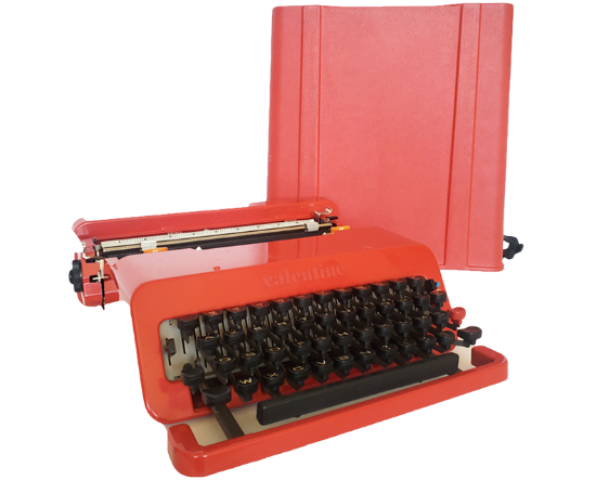The Valentine typewriter, a Pop-Art icon

Olivetti, an Italian company that pioneered office automation and typewriters in particular, was keen to give its products a strong visual identity. In 1958 it hired an independent consultant, a great up-and-coming designer called Ettore Sottsass, to design its new electronics division. The man who is today considered one of the most important and influential Italian designers in the history of Italian and international design in the 20th century soon returned from California, where he had discovered Pop Art, industrial design and new materials. These were sources of inspiration that would remain with him for the rest of his life. What followed was a flourishing collaboration with Olivetti, during which the young designer created numerous pieces of office equipment, including the first Italian “electronic arithmetic calculator”.
Turning a utilitarian object associated with the world of work into a playful pop object
In 1968, together with the British designer Perry King, he designed a colourful portable typewriter. A UFO in the grey, unadorned and staid world of office automation at that era, it was a perfect illustration of his vision for industrial design: "an object should always bring fantasy, surprise and independence”, both in its creation and in its use. For this new creation, the designer tapped into the innovative qualities of plastic, exploiting the possibilities offered by moulding and reshaping this lightweight material.
New materials for a pioneering, innovative design
Made from injection-moulded ABS, it consists of 2 separate parts, the machine itself, fitted with a handle, and a hard plastic carrying case with an opening for the handle. Innovative, lightweight and easy to transport, this unique-looking machine was launched a year later, on Valentine’s Day. Available in white, green and blue, Valentine is forever associated with the vermilion version, symbolising the wind of freedom and impertinence that characterised Pop Art and Sottsass’s work throughout his life.
Unfortunately, it was this very red, considered to be too taxing on the eyes (and too expensive), that was to be its undoing: Valentine did not meet with public approval.
It did, however, bring Ettore Sottsass’s “pop” credentials to the attention of the general public, and remains an emblematic object of 1960s and 1970s design. A symbol of the “anti-machine”, Valentine’s scarlet model has been part of the permanent collections of the MOMA in New York, the Triennale Design Museum in Milan and the Centre Georges Pompidou in Paris since the early 1970s. It remains an object of attraction and desire, exhibited in many Italian and international design exhibitions around the world.





